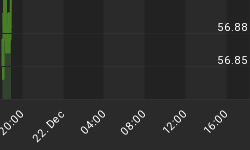I have long been saying in this Newsletter that continuing U.S. Net Trade Deficits are a very big deal for the U.S. in the context of its position as the largest world economic power and influencer.
Last week it was reported that the U.S. Net Trade Deficit was $540 billion (an average of $45 billion per month) in 2012, $20 billion less than it was in 2011. This change related entirely to a year/year increase in net services, with almost no change year/year in the monetary difference between 'goods' imported and exported.
December's net trade deficit was reported at $38.5 billion, down from $48.6 billion in November (a 20.8% reduction)
At least one article reported that this was "quickly hailed by the Obama administration as a sign of success in the battle to better balance the country's trade relations with the rest of the world". U.S. Deputy Commerce Secretary Rebecca Blank is quoted as saying "We're continuing to make historic progress". Even if Ms. Blank's statement turns out to be true based on trends as they unfold over the next few months, a one month improvement that is highly oil price dependent can hardly be referred to as 'historic progress'.
A careful read of the January 8 report of the U.S. Bureau of Economic Analysis reveals that the difference in the December net deficit as currently reported (recall all monthly economic statistics are subject to subsequent adjustment) was largely driven by a $3.8 billion export increase and a $4.2 billion import decrease of Industrial Supplies and Materials. Changes to consumer goods exports and imports were virtually unchanged from November to December.
While it may or may not prove to be important, year/year the U.S. net trade deficit in December 2012 was $13.2 billion lower (just over 25%) than it was in December 2011.
The following charts show the progression of U.S. net trade deficits over various date ranges. The most shocking of the three is the third which shows the build-up of the U.S. net trade deficit after President Nixon in 1971 allowed the price of gold to float freely.

Source: U.S. Bureau of Economic Analysis

Source: StockResearchPortal.com

Source: StockResearchPortal.com
Irrespective of the improved one month result in December, America will continue for the foreseeable future to incur monthly trade deficits, and hence will continue to weaken economically against its collective trading partners. The economic theory that net trade deficits are not a problem because over time they will reverse and trade surpluses will balance with them over time needs re-thinking. America has now run trade deficits continuously for over 40 years, with no end in sight - and particularly after 1999 when manufacturing jobs left the U.S. in earnest.
Topical Reference: U.S. International Trade in Goods and Services, from U.S. Bureau of Economic Analysis, February 8, 2013. Also:
-
read U.S. trade deficit drops for 2012, from The Washington Post, Howard Schneider, February 8, 2012 - reading time 4 minutes
-
read 2012 Trade Deficit with China Tops $300 billion; Shatters Record, from TradeReform.org, Sara Haimowitz, February 8, 2013 - reading time 2 minutes; and,
-
see The United State's Trade Deficit, from Economy In Crisis, February 10, 2013 - video viewing time 3 minutes















